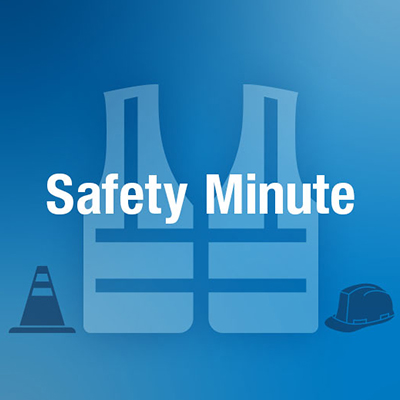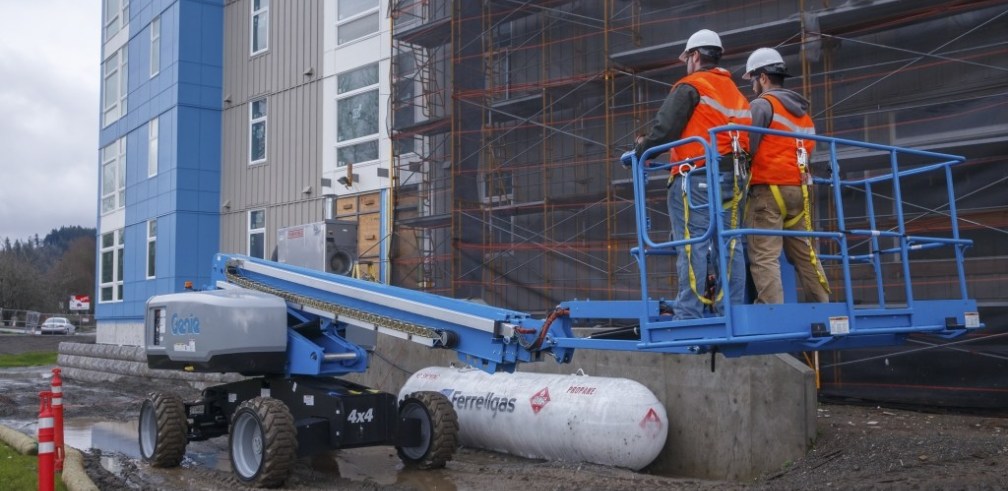What you need to Know About Aerial Work Platform Training
by Scott Owyen - Director of Training On Apr 7, 2016, 03:00 AM
Subscribe To Aerial Pros
Filter by tags
Safety is always a priority on every work site. Unfortunately, most accidents or equipment damage happens when operators overlook important safety precautions or don’t fully understand how to operate equipment, this is where aerial work platform training comes in.
At Genie, safety in the industry is our top priority. The first step in ensuring this is to make people aware how important training is to the wellbeing of the operator and the productivity of the machine. What we have realized in the last few years is that there is a lot of misunderstandings and misconceptions in the industry about training, and our goal is to clear up the confusion.
To help with that, we’ve put together a few of the most commonly asked questions we hear about training and the answers:
 Do I need to be trained to operate an aerial work platform?
Do I need to be trained to operate an aerial work platform?
It is important to know that training is not voluntary; it is required by law. To be in compliance with industry standards, only properly trained personnel should be allowed to operate an aerial platform.
This means that everyone who will operate an aerial platform must be:
- Trained according to the ANSI A92 guidelines before being assigned to operate the aerial platform
- Familiarized with the aerial platform to be operated
- Knows where the weather resistant compartment for manual(s) storage is located
- Knows the operating and maintenance manuals supplied by the manufacturer are stored in the weather resistant compartment and is familiar with the operating and safety manuals
- Understands all control functions, placards and warnings
- Is aware of and understands all safety devices specific to the model aerial platform being used
- Made aware of responsibilities of operators
- Evaluated and retrained, if necessary
How long does Aerial Work Platform training take?
When done properly, the general training component usually takes between 3-6 hours to complete, depending upon the number of students and the number of machines to be trained on. Once general training has been completed, familiarization on additional models should be 15-60 minutes or more in duration depending upon the machine.
Does my Aerial Work Platform Training ever expire?
Currently, ANSI A92 standards do not impose an expiration period for Aerial Work Platform Operator Training. However, an operator may be directed to receive retraining based on observation and evaluation. Situations when retraining may be required include:
- If the operator has been observed to operate the machine in an unsafe manner,
- If the operator is involved in an accident or near-miss incident,
- If the operator has received an evaluation that reveals that operator is not operating the machine safely.
Do I need to show proof of training whenever I operate an aerial work platform?
ANSI Standards do require that an operator can provide “Proof of Training” upon request as outlined below:
Proof of training records need to contain the following information:
(1) Name of entity providing training or retraining
(2) Name of trainer(s)
(3) Clear identification of the model(s) that training covered
(4) Date of training
(5) Name of trainee
A wallet-sized proof of training card is a convenient way for the operator to provide instant proof of training when asked.
 Is training provided in the operator’s chosen language?
Is training provided in the operator’s chosen language?
Yes. On April 28, 2010, the Assistant Secretary of Labor issued a memorandum that states training must be provided using both a language and vocabulary that operators can understand.
This means that if an operator does not speak or comprehend English, instruction must be provided in a language the operator can understand. Similarly, if the operator’s vocabulary is limited, the training must account for that limitation. Please note: If an operator is not literate, telling them to read training materials will not satisfy the training obligation.
Related Posts

Jon Dalberg - Genie Commodity Manager, Terex AWP
I started my career with Genie in 1998. Soon after that, I became the Hydraulics Buyer for Genie® Big Booms in Building #3.
Continue Reading

Genie Safety Minute: Loading an AWP for Transport
Genie Safety Minute is intended to facilitate health and safety discussions on the job site.
Continue Reading

Chad Hislop - Genie Director of Engineering, Terex AWP
I first found Genie at a Career Fair at the University of Washington when I was looking for an internship.
Continue Reading


